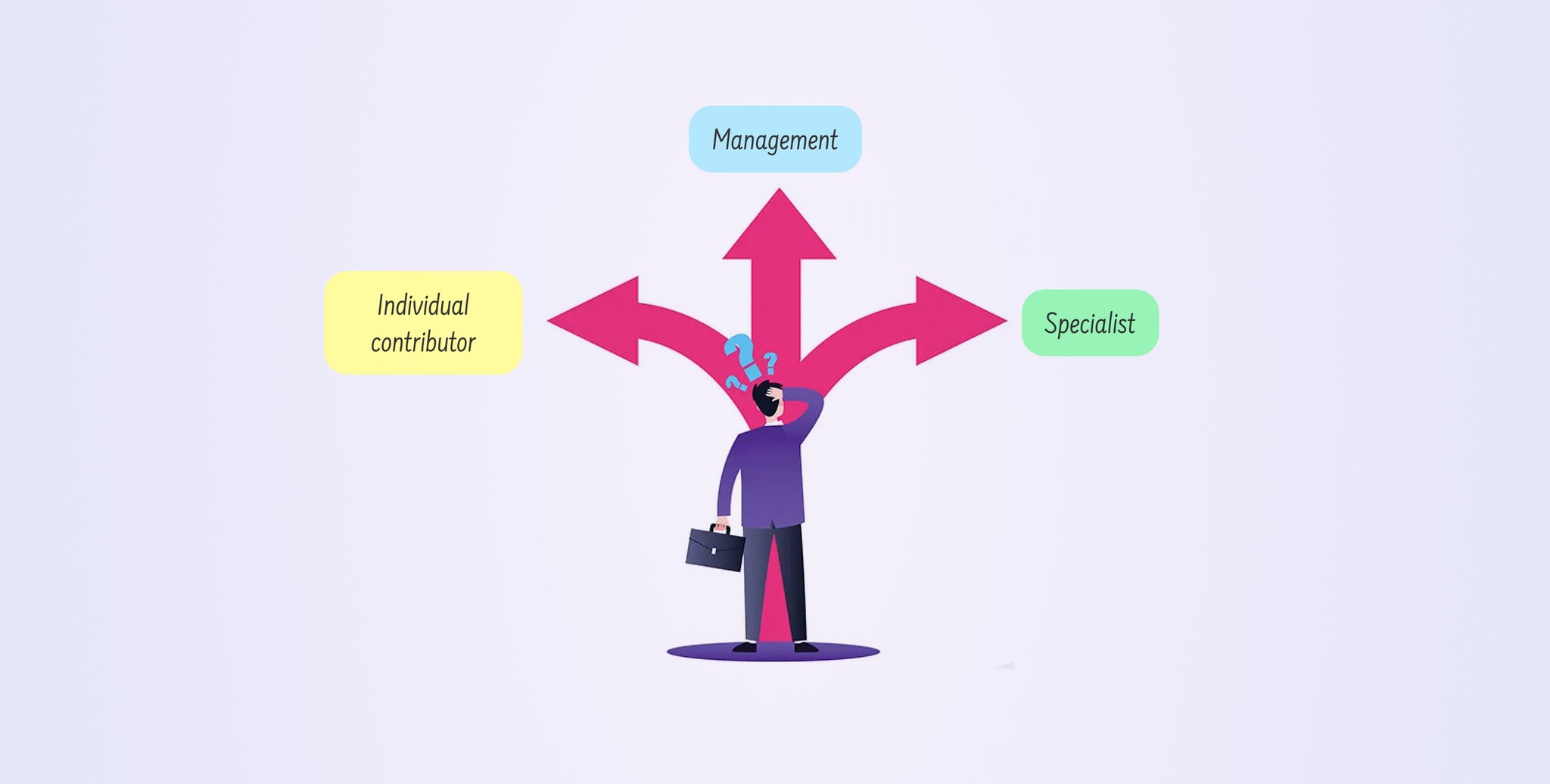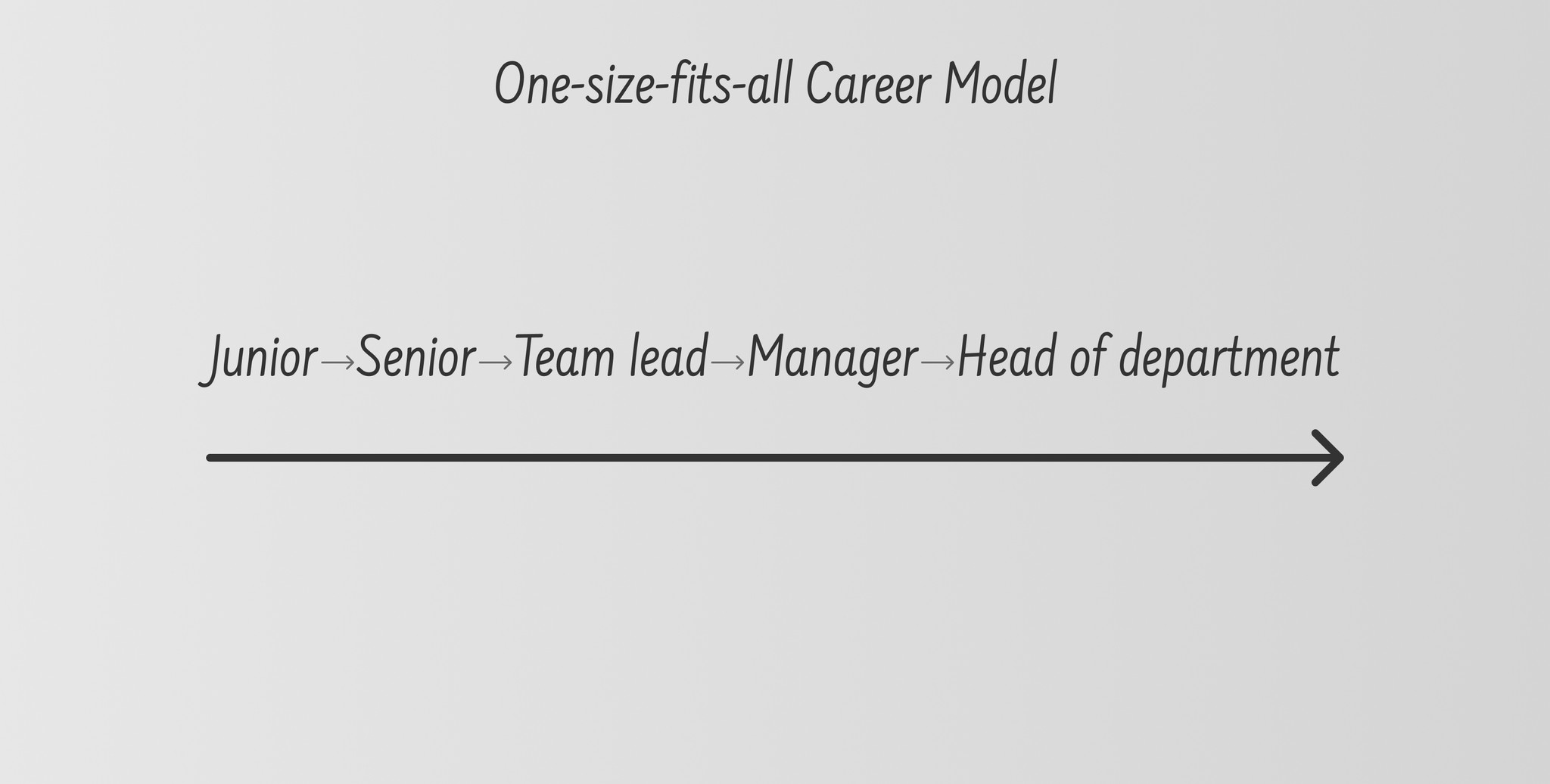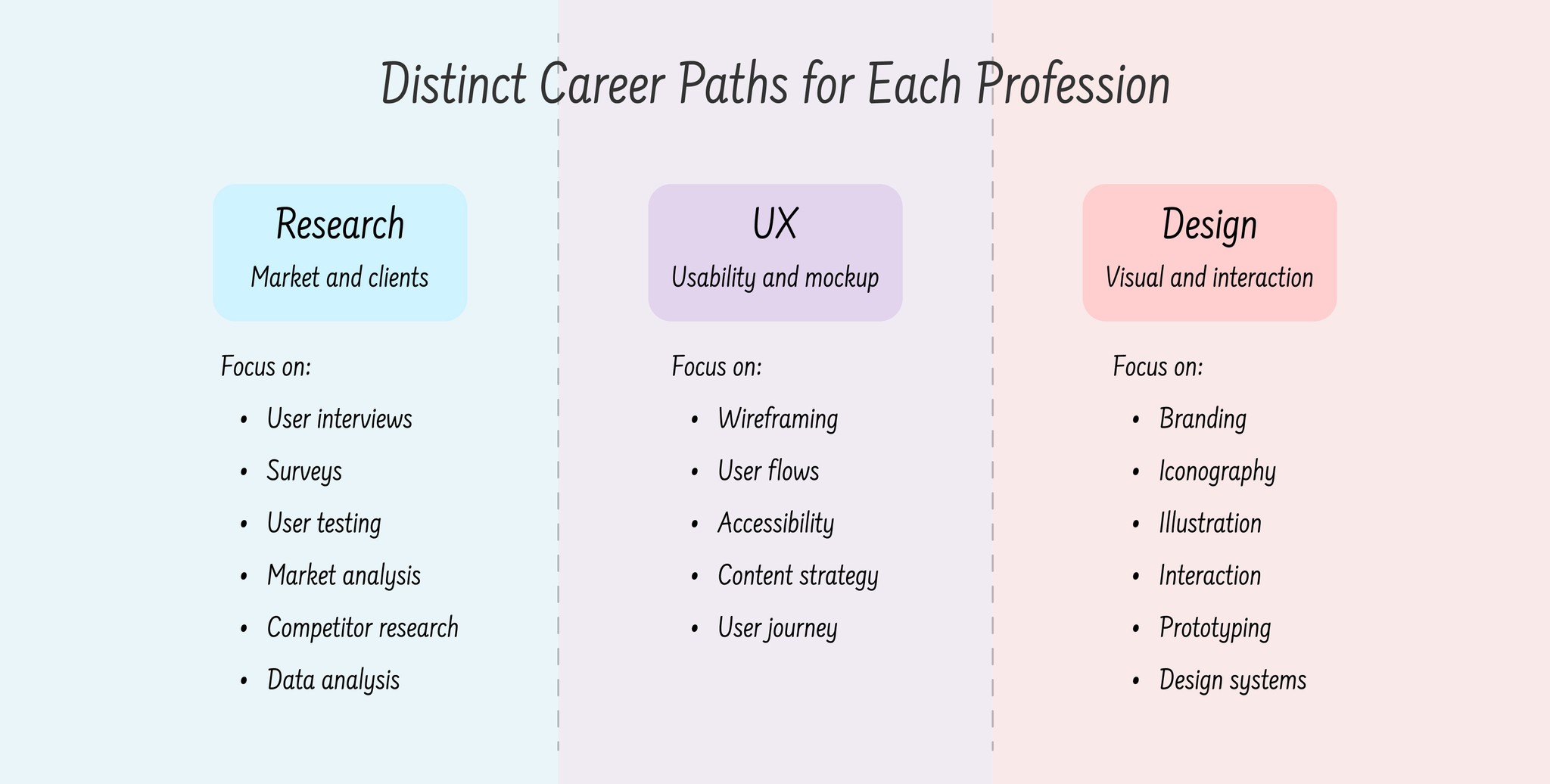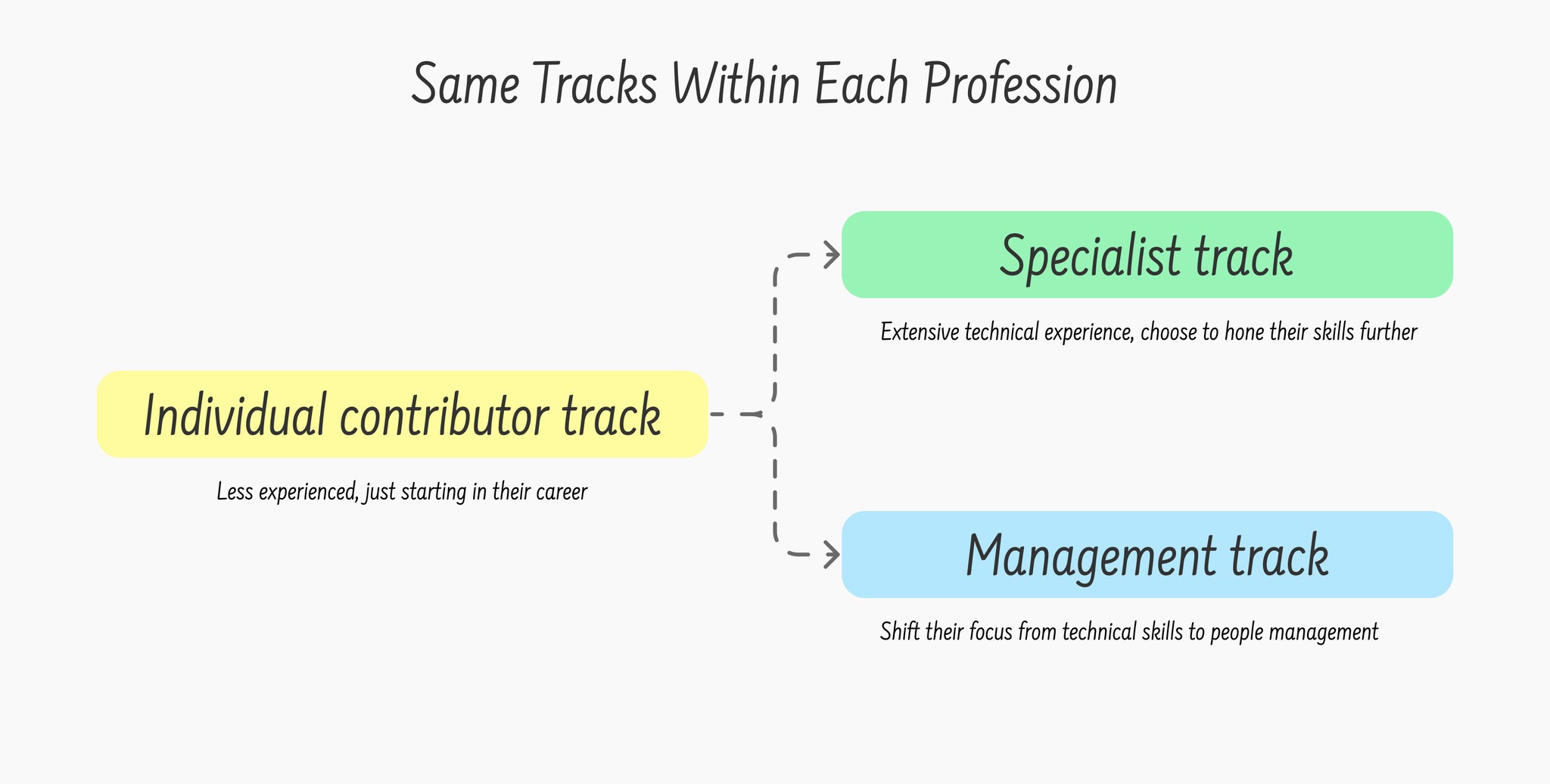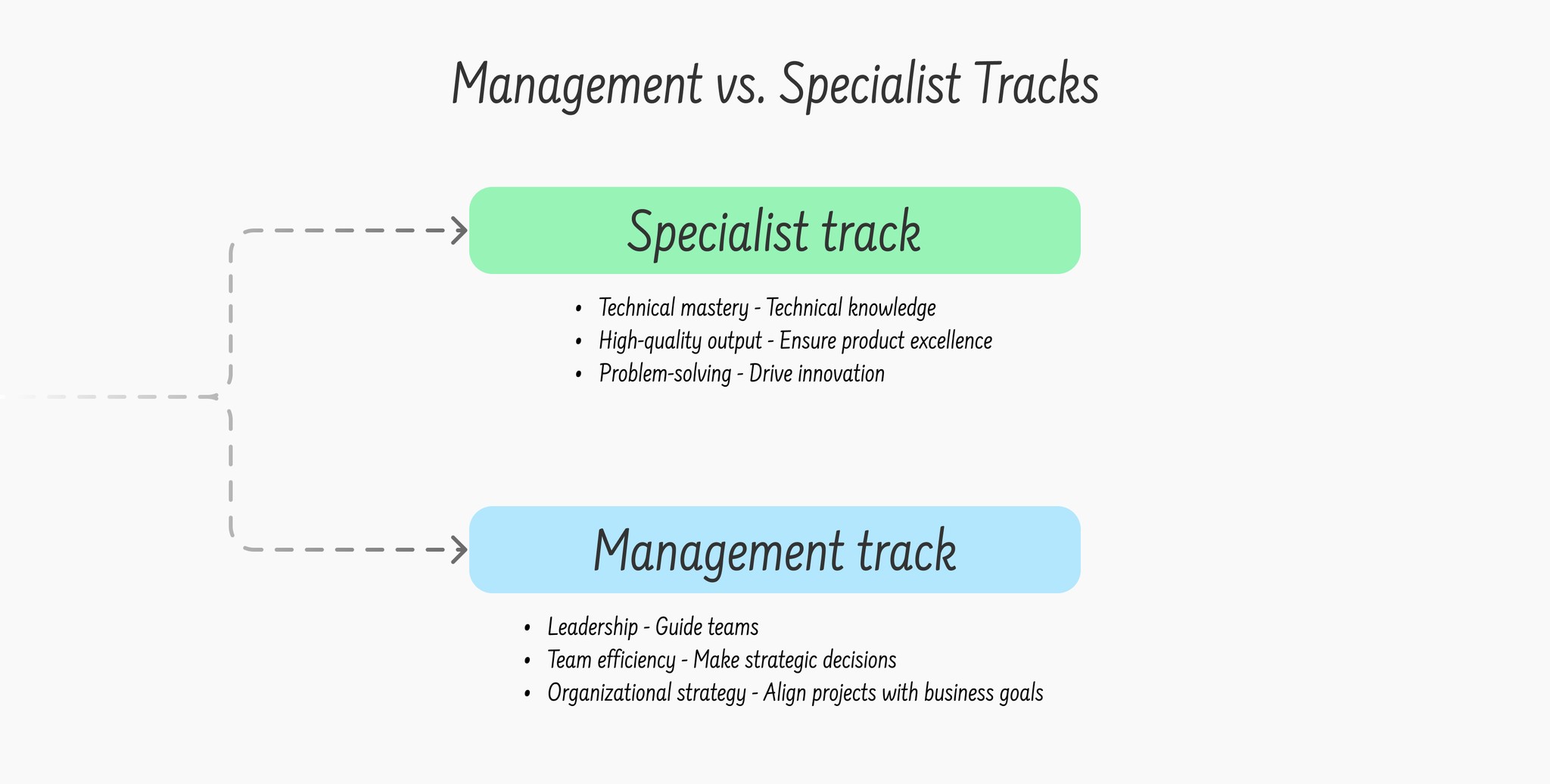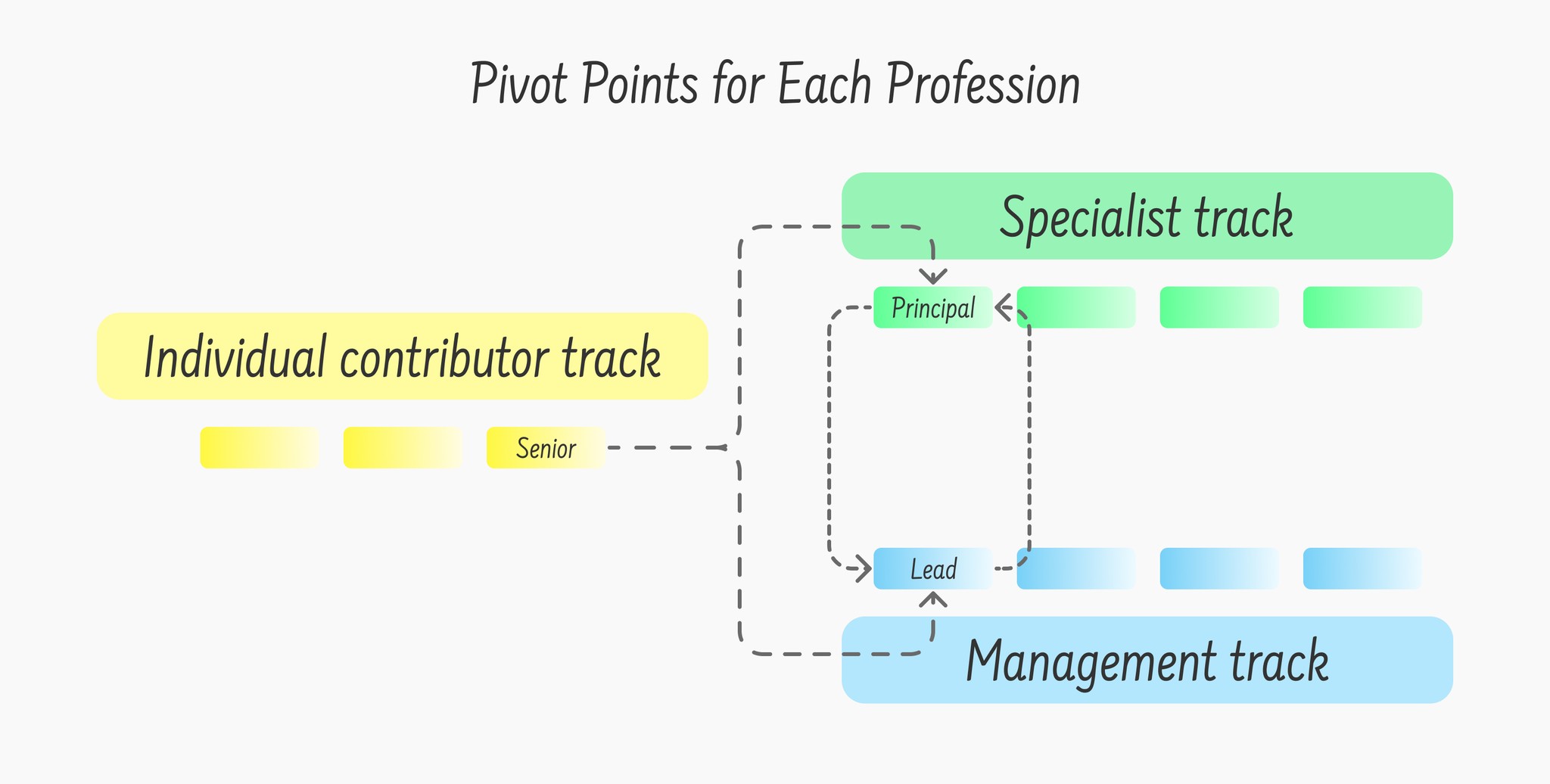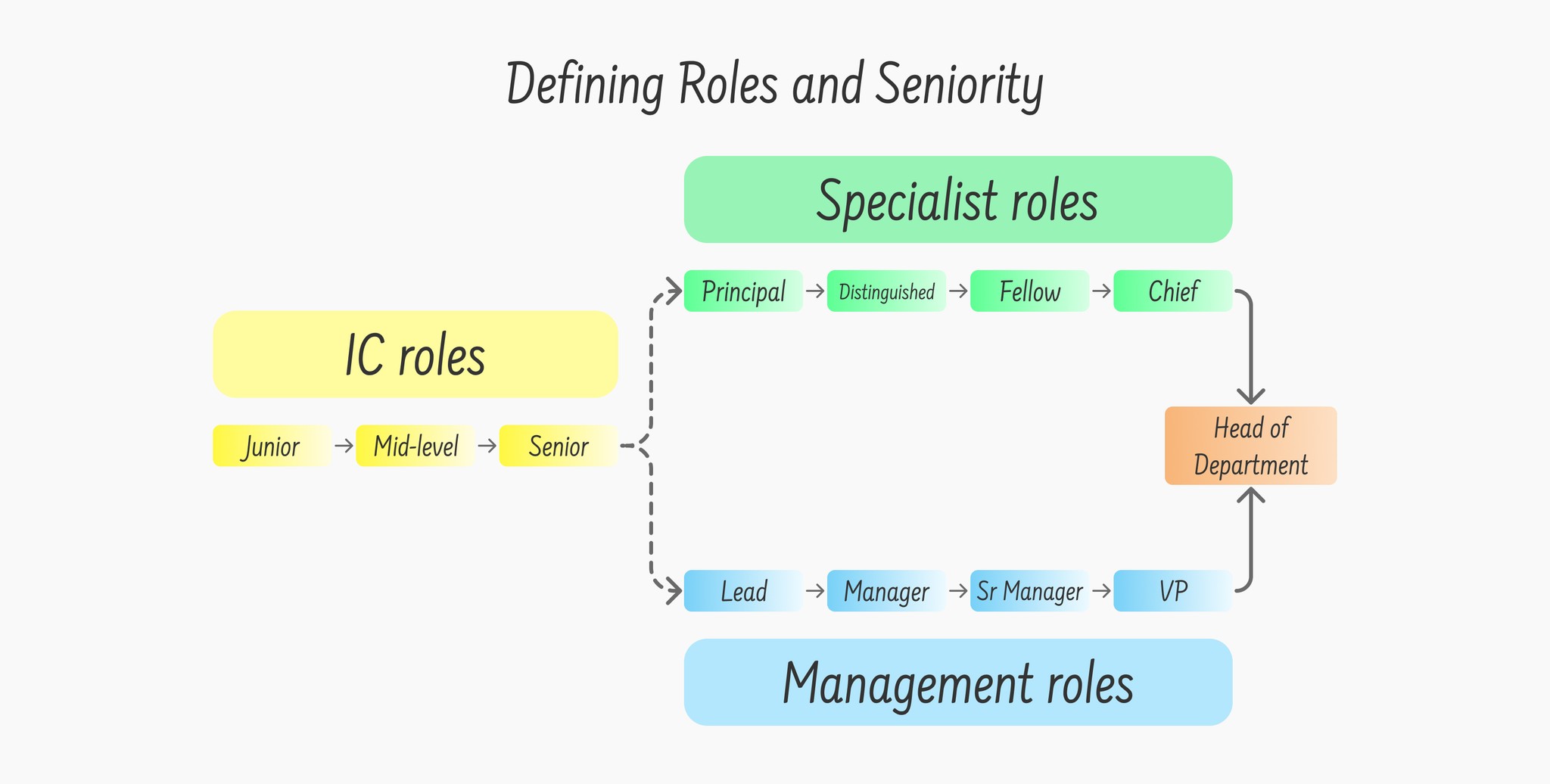Since this is a comprehensive topic, I've broken it into two articles. This article will delve into career paths, why they need to be fixed, and how I categorize career paths into three tracks. The other article will focus on identifying the required skills for each role within the team.
The Existing Career Path Was Broken
The company grew from 300+ to 1000+ people in four years, but the UI/UX team's career ladder remained a one-size-fits-all model dictated by HR. This linear path—from junior to senior, team lead, manager, and head of office—was inadequate. It failed to cater to diverse career aspirations: talented designers uninterested in management had no path for advancement, while those with strong people management skills but less design expertise were overlooked for promotions.
For a team of 30, we needed to address these issues to ensure each individual could excel and reach their full potential. After extensive research and countless iterations, I finalized a comprehensive career path design.
Distinct Career Paths for UX, Design, and Research
The career paths in research, UX, and design focus on different aspects of product development. Researchers gather market and client insights. UX professionals use these insights to create mockups and enhance usability. Designers ensure the final product is visually appealing and user-friendly. This specialization ensures comprehensive product development, from the Researcher team understanding the market to the UX team creating user-centered designs and the Design team creating high-quality visuals.
Same Tracks Within Each Profession
The career path of each profession can break into three tracks: Individual Contributor (IC), Specialist, and Managerial. The IC track is for those who are less experienced and just starting in their career, without heavy management responsibilities. The Specialist track is for those with extensive technical experience who choose to hone their skills further. The Managerial track is for those who have shown the ability to shift their focus from technical skills to people management.
Management vs. Specialist Tracks
Different career tracks for management and specialist roles cater not only to organizational needs but also to individual strengths and aspirations. The management path emphasizes leadership, team efficiency, and organizational strategy, with managers guiding teams, making strategic decisions, and aligning projects with business goals. Conversely, the specialist path focuses on technical mastery, high-quality output, and problem-solving. Specialists deepen their technical knowledge, ensure product excellence, and drive innovation.
By providing separate tracks, organizations allow individuals to pursue their specific skills and expertise without worrying about remuneration or seniority, ensuring both strong leadership and advanced technical proficiency.
Pivot Points for Each Profession
For each profession—research, UX, and design—once individuals reach the senior level, their next promotion will be a pivot point where they can choose to move towards either the Specialist track or the Managerial track. Once on the first level of either track, they can switch tracks before moving to the next role. This ensures they make clear, informed decisions about their career paths.
Defining Roles and Seniority
The IC track consists of junior, mid-level, and senior roles. The Specialist track includes Principal, Distinguished, Fellow, and Chief. The Managerial track includes Lead, Manager, Senior Manager, and VP. At the top, the head of the department oversees the research, UX, and design teams. This role requires a comprehensive understanding of each team and the ability to manage upwards effectively, ensuring alignment with higher-level organizational goals.
Defining Skills and Skill Levels for Each Role
I identified foundational skills that apply across all professions, as well as specialist skills in UX, design, research, and leadership. Each set of skills is broken down into five levels. Read the Skills article to learn more about how this works.
Final Approved Career Paths
After extensive research and careful design, I have finalized the career paths for each profession within the UI/UX team. These paths clearly outline the progression, roles, and skills required for each track, ensuring that every team member has a clear and achievable path for career advancement.
Below, you will find the career paths for Research, UX, and Design professions, each tailored to meet the unique demands and strengths of the respective fields.
